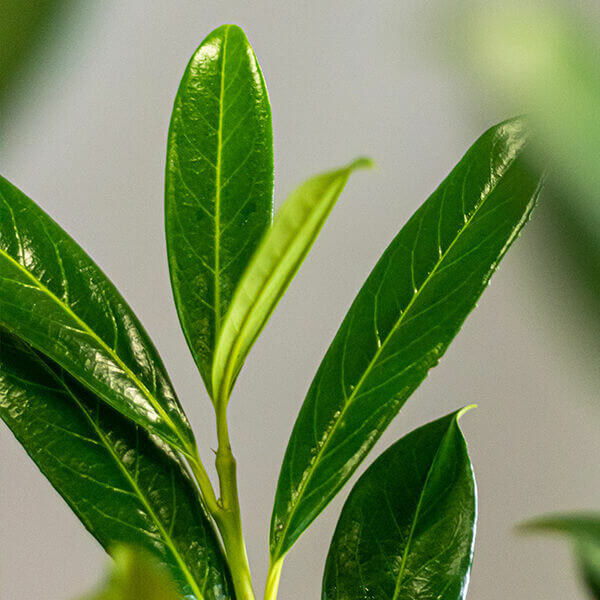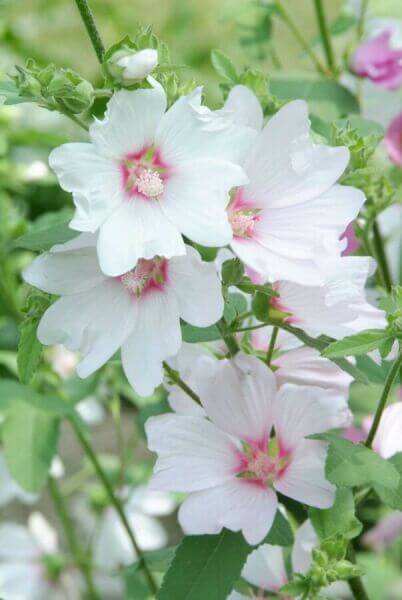Best Hedging Plants For All Seasons
Best Hedging Plants For All Seasons
Blog Article
Best Hedging Plants For Unique Gardens
Boost your garden's allure with lush hedge ranges such as Yew (Taxus), Thuja, Laurel, Photinia, and Bamboo, commemorated for their structural integrity and environmental advantages.
Yew and Thuja provide evergreen coverage and winter resilience, while Laurel provides quick growth and broad, aromatic leaves.
Photinia adds seasonal appeal with its lively red foliage, and Bamboo provides a low-maintenance, tranquil ambiance.
These hedges improve air quality, minimize sound, and create tranquil, private spaces.
Appropriate planting, spacing, and upkeep guarantee energetic development and ecological harmony.
Explore how these lush varieties can raise your garden's appeal and wellness.
Secret Takeaways
Change Your Garden With Lush Hedge Ranges
- Select Yew for its thick, evergreen growth and unparalleled longevity.
- Opt for Laurel for its fast growth and broad leaves, making sure fast personal privacy.
- Select Photinia for its lively seasonal foliage, which turns a striking dark red.
- Make use of Bamboo for a low-maintenance, winter-hardy hedge with aesthetic appeal.
- Space plants 2-3 per meter and prune routinely for ideal growth and health.
Popular Hedge Plants
When transforming a garden with rich hedge varieties, it's important to consider popular hedge plants such as Yew, Thuja, Laurel, and Photinia due to their unique attributes and advantages.
Yew (Taxus) is highly esteemed for its durability and thick, green growth, making it a prime choice for sustaining landscapes.
Thuja is kept in mind for its evergreen foliage and robust winter resilience.
Photinia includes seasonal vibrancy with red leaves that darken with time, producing vibrant visual appeal.
Laurel provides rapid development and aromatic, broad leaves, suitable for quick personal privacy.
Furthermore, Bamboo is an outstanding choice for atmosphere, providing a low-maintenance, winter-hardy option that boosts the garden's visual with its stylish, swaying canes.
These choices cater to a range of horticultural requirements and preferences.
Advantages of Garden Hedges
Garden hedges provide a multitude of advantages, making them a valuable addition to any landscape. These natural barriers are cost-effective to execute and provide substantial wind defense, improving air circulation and contributing to sound reduction. The thick foliage of hedges like Thuja and Beech guarantees personal privacy by obstructing presence, creating a tranquil and secluded environment.
Hedges likewise play a crucial function in microclimate guideline, offering a steady environment that fosters plant growth and decreases temperature variations. Their intricate leaf structures filter contaminants, enhancing air quality and contributing to a healthier garden environment.
Moreover, hedges master sound reduction, absorbing and deflecting acoustic waves to lower ambient sound levels. This dual functionality of offering both visual and acoustic privacy boosts the total tranquility and aesthetic appeal of any garden.
Planting and Upkeep Tips
For an effective hedge, careful preparation of the planting area is vital. Ensure the soil has appropriate pH and drainage to support strong root advancement.
Space the plants appropriately for the chosen types. Water the hedge often throughout its preliminary development phase, adjusting as needed with seasonal changes.
Execute a organized pest control and illness avoidance strategy, using chemical or organic treatments when needed. Frequently examine for aphids, termites, and fungal infections.
Apply mulch to keep wetness and suppress weeds. Seasonal pruning promotes thick growth and air blood circulation, necessary for plant health.
Following these standards will help you cultivate a lively, well-kept hedge that improves the appeal of your garden.
Spacing and Cutting Guidelines
Spacing and Trimming Guidelines
Proper spacing and cutting are vital for cultivating healthy, visually appealing hedges. Adequate spacing ensures each plant receives sufficient nutrients, light, and airflow.
Follow these guidelines for optimal hedge maintenance:
- Spacing: Position hedge plants 2-3 plants per meter to encourage robust development.
- Pruning Strategies: Routine pruning is necessary for keeping wanted hedge height and shape. Cut brand-new growth in summertime and cut back older wood during winter season.
- Seasonal Care: Change cutting techniques and schedules according to seasonal requirements to guarantee plant health.
- Hedge Height: Regularly monitor and cut to preserve the preferred hedge height and achieve consistent looks.
Sticking to these steps will ensure your hedge grows, improving both the appeal and functionality of your garden.
Picking the Right Hedge
Picking the Right Hedge
Choosing the suitable hedge involves examining elements such as mature height, foliage density, and ecological durability. Successful hedge plant choice needs comprehending each species' development qualities and site-specific adaptability.
For instance, Yew (Taxus) provides excellent durability and dense development, while Thuja is notable for its winter season resilience. In addition, considering upkeep requirements is essential; fast-growing types like Laurel or Privet demand routine trimming, whereas low-maintenance choices like Bamboo or Ivy may be more suitable for those seeking very little maintenance.
Environmental aspects such as soil type, light availability, and wetness conditions should also assist the selection procedure. This mindful method makes sure the chosen hedges will thrive, offering both aesthetic and functional benefits to the garden landscape.
Shipment and Planting Advice
To ensure your hedge plants thrive, they ought to be provided by specialized couriers and planted quickly upon arrival.
Follow these essential actions for successful planting:
- Soil Preparation: Improve the soil with raw material to enhance drain and nutrient content.
- Planting Depth: Produce a trench twice the width and equivalent to the depth of the root ball.
- Watering Strategies: Water completely after planting, keeping the soil consistently moist however not filled.
- Mulching: Use a layer of mulch to keep moisture and reduce weeds.
Customer Assistance and Service
Provided the vital function of timely support in horticultural pursuits, our client support group is available 6 days a week through telephone, email, and social networks to provide expert advice and quickly deal with any concerns. Their commitment to fast response times guarantees client fulfillment by fixing questions related to plant health, optimal planting methods, and maintenance schedules.

-------------------
Six days a week
This comprehensive support group, enhanced by an excellent 9.3/ 10 consumer rating, highlights our commitment to enhancing the gardening experience for each client.
Often Asked Questions
For How Long Does It Consider Hedge Plants to Establish?
Hedge plants normally need one to 3 years to become completely established, with the exact duration varying by types and growing conditions.
Reliable care throughout this important duration is necessary for robust development. Consistent watering, watchful weed control, and here appropriate fertilizer application are pivotal in promoting strong root development.
For example, fast-growing types like Laurel might establish faster, while slower-growing varieties such as Yew might take longer. Thorough upkeep accelerates the establishment procedure, leading to healthy and dense hedges.
What Are the very best Hedge Plants for Personal Privacy?
The concern of the finest hedge plants for privacy involves examining evergreen and deciduous alternatives.
Evergreen hedges like Thuja, Laurel, and Cypress offer year-round coverage, ensuring constant privacy.
In contrast, deciduous hedges such as Beech use seasonal personal privacy, shedding leaves in chillier months.
Key upkeep ideas for privacy hedges include routine cutting, fertilizing in spring, and appropriate spacing-- typically 2 to 3 plants per meter.
In addition, constant watering and persistent weed removal are vital for promoting healthy, thick growth.
Can Hedge Plants Draw In Wildlife to My Garden?
Yes, hedge plants can attract wildlife to your garden by supplying vital benefits like shelter, food, and nesting websites, thus boosting local biodiversity. Yew, holly, and laurel are outstanding for attracting birds, while ivy supports a variety of pests.
However, it is very important to note that there are some disadvantages, such as increased upkeep to manage bugs and regular upkeep. Thoroughly selecting and preserving hedge varieties can help stabilize these disadvantages and advantages, ultimately promoting a lively and sustainable community in your garden.
Exist Any Flowering Hedge Plants Available?
Yes, there are flowering hedge plants available that can improve the appeal of your garden.
For example, Elaeagnus, also understood as Olive Willow, produces aromatic white flowers in the fall, including a touch of elegance.
Photinia, another popular choice, showcases dynamic red leaves that grow into an abundant green, creating a dynamic visual impact throughout the seasons.
To guarantee these plants prosper, it's necessary to practice correct pruning techniques and seasonal maintenance, such as trimming new growth in the summertime and cutting back in the winter.
These steps will assist keep the health and visual appeal of your flowering hedges.
How Do I Prevent Insects in My Hedge Plants?
To prevent pests in hedge plants, utilize natural bug control approaches and keep correct hedge care. Present beneficial insects like ladybugs, which prey on harmful pests, to create a well balanced ecosystem.
Regularly inspect your hedges for signs of problem and promptly eliminate any affected parts to prevent the spread. Guarantee the health of your hedges by applying balanced fertilizers and supplying appropriate water.
Make use of mulching to maintain soil moisture and proper spacing to reduce plant stress and promote robust development. These practices jointly help in reducing pest concerns and keeping a healthy hedge.
Conclusion
In essence, picking the best hedge varieties such as Yew, Thuja, and Laurel can transform any garden into a tranquil sanctuary. These plants offer year-round greenery, boost visual appeal, and offer useful advantages like noise decrease and wind protection.
Correct planting methods, accurate spacing, constant watering, and seasonal cutting are crucial for optimal development.
Trustworthy delivery services and skilled client assistance guarantee a seamless experience from purchase to planting, making it easier than ever to elevate your outside area.
Garden hedges offer a plethora of benefits, making them an important addition to any landscape. These natural barriers are affordable to implement and offer significant wind security, enhancing air flow and contributing to sound decrease. The dense foliage of hedges like Thuja and Beech guarantees privacy by blocking exposure, developing a secluded and tranquil environment.

Pruning Strategies: Routine pruning is essential for maintaining wanted hedge height and shape. Cut brand-new growth in summer and cut back older wood during winter season.
Report this page